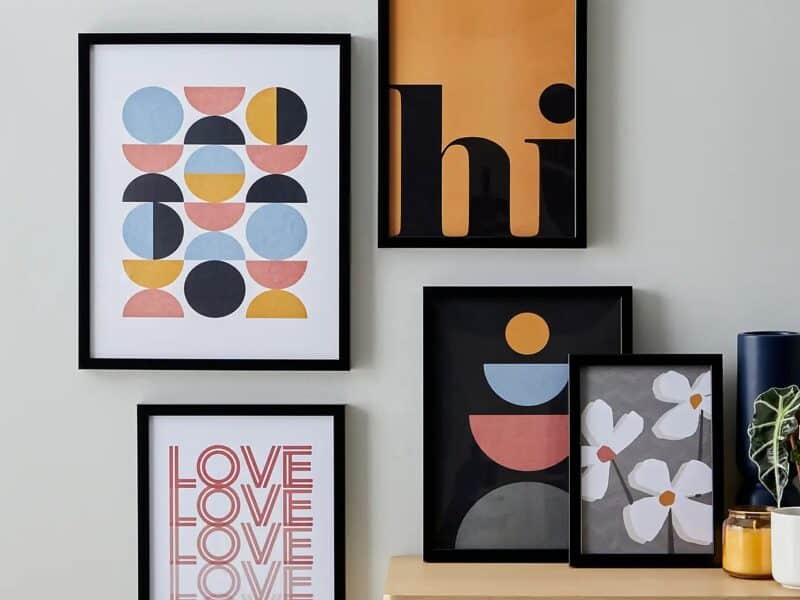
Stencilling is a form of folk art that originated as an alternative to buying expensive textiles. Scenes of everyday life were cut into templates then stencilled on walls and wood floors to create decorative patterns that resembled wallpaper and rugs.
The advantages of stencilling today are that there are hundred of pre-cut designs to choose from and modern stencils are made from plastic so they don’t tear, and are reusable.
The range of stencil designs is huge, including single overlay designs which are those that are contained on one sheet, or overlay. The elements of the design are separated, and connected, by small bridges. There is also dimensional stencilling, or stencil embossing, this is a unique look that is achieved by towelling a textural material over and through a single overlay stencil.
Stencilling Applicators
Stencil brushes usually contain nylon or natural bristles. Natural bristles are softer and so are better for brush stroking and swirling techniques, whereas nylon bristles are stiffer and more suited to stippling. Sponges or foam brushes are also useful for creating texture. If you dilute your stencil paint with a little water it will prevent the sponge’s pores from becoming clogged and smearing your paint.
You can let your imagination run when it come to using other applicators to create different textures anything from range to cotton balls, from plastic bags to feathers can be used to create a pattern to suit your needs.
Stencil placement
Before you start stencilling you will need to calculate your stencil placement on the wall. Measure the wall from one corner to the other. Divide the measurement by the length of the repeat of the stencil (this is usually found on the packet). If the number you end up with has a remainder that is less than half the length of the repeat, divide the remainder by the number of repeats.
You should put the resulting amount of space between each application of your stencil to stretch it out to cover the full length of the wall evenly. If the remainder is greater than half of the length of the repeat, subtract the remainder from the length of the repeat and then divide this number by the number of repeats. This will give you the amount of overlap you will need to squeeze the repeats together.
Always begin stencilling in the least noticeable part of your room. This way, you can perfect your technique before moving to the areas that are seen more easily.
Basic stencilling
As you work on each stencil, first concentrate the paint around the outer edges of the cut-out areas, keep the brush moving, with small, swirling strokes as you move around the edges. Gradually blend the colour in towards the centre of the exposed area by using a lighter pressure and a dryer brush. The colour should fade out gradually from the edge to the centre.
Each time you reload the brush you must go through the same process of off-loading the paint well onto paper towels. This, along with adjustments in the amount of pressure you are putting on the brush, will allow you to easily control the depth of colour and maintain a consistent print.


